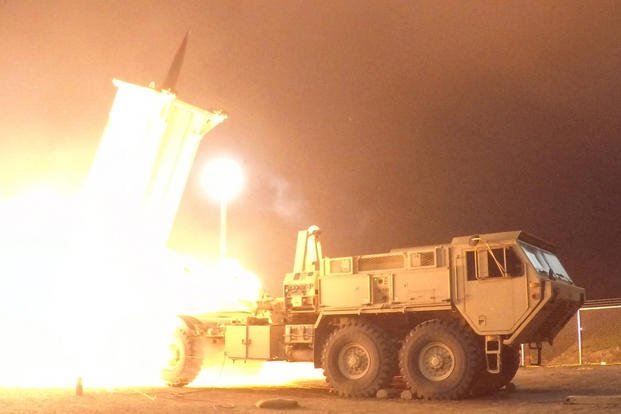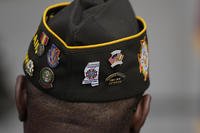More troops and fighter jets are headed to Saudi Arabia in response to Iran's continued antagonistic actions in the Middle East, Defense Secretary Mark Esper and Chairman of the Joint Chiefs of Staff Army Gen. Mark Milley announced Friday.
The Defense Department said it will send two fighter squadrons, an Air Expeditionary Wing, two Patriot missile batteries, and one Terminal High Altitude Area Defense system, known as THAAD, to act as a force stabilizer, bringing the count to 3,000 additional troops that have had deployments authorized or extended in the last month, the top officials said.
A department official told Military.com that while Esper has authorized the deployments, the U.S. Air Force is still determining what type of fighters are available to deploy at Central Command's request. The latest deployment will use 2,800 new U.S. personnel, in addition to the 200 troops that deployed on Sept. 26 to support a single Patriot air defense battery and four Sentinel 3D Radars.
Earlier this year, F-15C Eagles deployed to the Middle East to take over the F-22 Raptor's persistent mission in the region. The F-35 fifth-generation fighter, which first deployed to the theater in April, began multiple "show of presence" flights alongside the F-15s over the Persian Gulf in May.
In response to Iranian provocation since May, Esper said the U.S. has moved "an array of additional capabilities to the region" including Airborne Early Warning aircraft squadrons, maritime patrol aircraft squadrons, multiple Patriot batteries, B-52 Stratofortress bombers, a U.S. Navy carrier strike group, an amphibious transport dock, unmanned aircraft, in addition to supplemental personnel.
Related: US Troops Are Likely Headed to This Saudi Air Base
"This has involved the deployment of roughly 14,000 additional U.S. forces to the region," he said, adding there are additional military units on alert ready for these regional missions "if necessary."
The Trump administration announced May 5 it was sending the aircraft carrier Abraham Lincoln and a B-52 bomber task force to the region to begin its force buildup. Since then, U.S. troops have also re-opened the Prince Sultan Air Base in Saudi Arabia's east central desert, which had been in disuse since the 2003 invasion of Iraq.
"This is for the purpose of defense for our interests and assets in the region," Milley said during the press conference, "and also to reestablish deterrence with respect to Iran in the wake of an attack on Saudi Arabia."
Citing intelligence evidence, Esper said the reason for the deployment was to make clear Iran can no longer continue with its larger campaign "to destabilize the Middle East and disrupt the global economy" by attacking sovereign neighbors such as Saudi Arabia.
Swarms of drones and cruise missiles on Sept. 14 devastated the huge Abqaiq oil production facility and the nearby Al Khurais oil field, initially knocking out about five million barrels per day of oil production, according to Saudi defense officials. Both Saudi and U.S. officials blamed the attack on Iran.
This is "to send a message to the Iranians, 'Do not strike another sovereign state, do not threaten American interests, American forces,' or we will respond," Esper said Friday.
"Do not mistake our restraint for weakness. If you will, you will regret that," he said.
-- Richard Sisk contributed to this report.
-- Oriana Pawlyk can be reached at oriana.pawlyk@military.com. Follow her on Twitter at @oriana0214.
Read More: Valkyrie Drone Damaged During Air Force Flight Test
Don't Miss a Single Military.com Story
To read the full article and get exclusive benefits, sign up today.
It’s FREE
Why am I seeing this? Visit our FAQs













